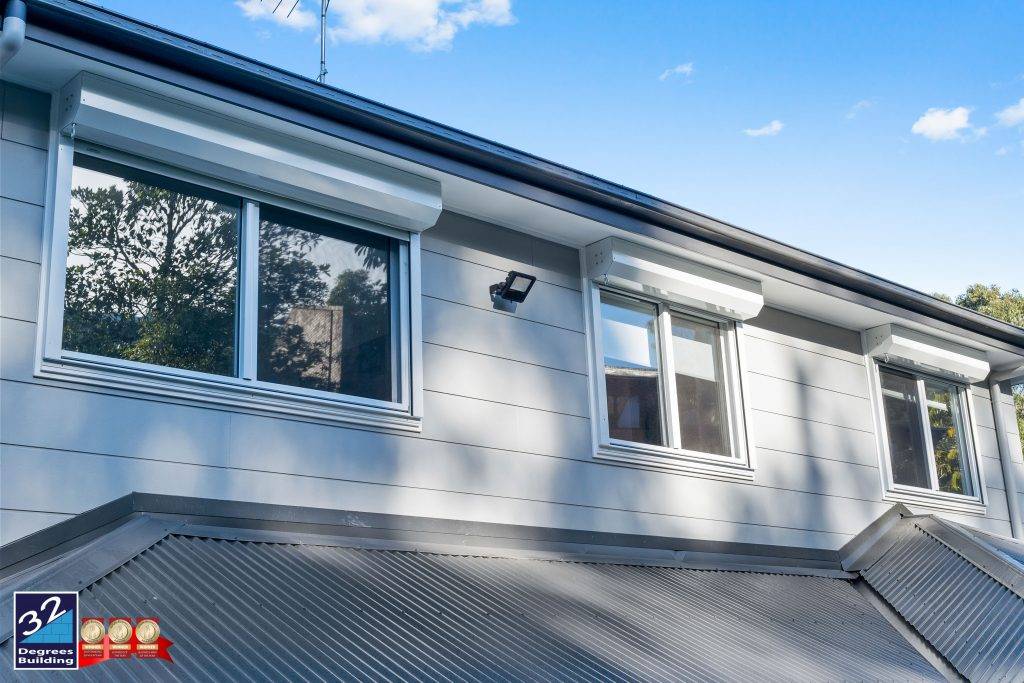-

bushfire attack level
Building in a bushfire prone area
We recently completed an extension and deck in Orangeville that was in a bushfire prone area and had to comply with BAL-FZ requirements. For those of you that are unfamiliar with being in a bushfire prone area, BAL-FZ means that the home has been classed as being located in direct flame zone and that there is an extreme risk to life and loss of the home should a bushfire occur.
Bushfire ratings are as follows;
- BAL-Low (Very Low Risk)
- BAL-12.5 (Low Risk)
- BAL-19 (Moderate Risk)
- BAL-29 (High Risk)
- BAL-40 (Very High Risk)
- BAL-FZ (Extreme Risk)
The BAL rating may determine the types of materials you are able to use or, additional materials that are required when building or extending your home (eg. bushfire shutters).

Bushfire Shutters at our BAL-FZ First Floor Addition in Lane Cove North (Click photo for full gallery)
What measures should you take?
If your property backs onto bushland or even a Council nature strip you will have to obtain a BAL Risk Assessment Certificate from a qualified consultant to determine your Bushfire Attack Level. The report will outline the BAL rating on each elevation (yes, your BAL rating can be different on each side of your home) and advise you of the measures you need to take to maximise the safety of your family and your home and ensure you stay protected.
Building in a bushfire prone area: flamezone
The home in Orangeville was classed as BAL-FZ as it was in a location where it was deemed an extreme risk to bushfire so there were a few requirements that we had to ensure that we undertook when building this extension to comply with the RFS and Council requirements;
- The deck was constructed with a cement based product with no gaps between the boards for embers to get into
- The subfloor brickwork still has to have ventilation, and so a metal gauze with no more than a 2mm aperture was used to cover the weep holes and stop embers from getting in under the home.
- The cladding we used was a minimum of 6mm thick with no gaps between the boards.
- The windows were made with 6mm toughened glass and aluminium frames
- Bushfire shutters were installed – you can have either manual or automatic
- The roof and deck frames were made of steel
- For the eaves we used firecheq plasterboard and importantly we ensured that all gaps and holes were sealed to stop potential embers getting into
If you are in a bushfire prone area and thinking of building an extension or addition, speak to us, we are able to provide you with advice and guide you in the right direction.
Watch our video
Watch Alistair, the builder out at the deck extension in Orangeville talking about how we met the BAL-FZ requirements.